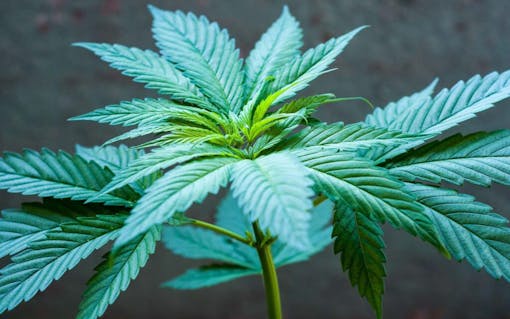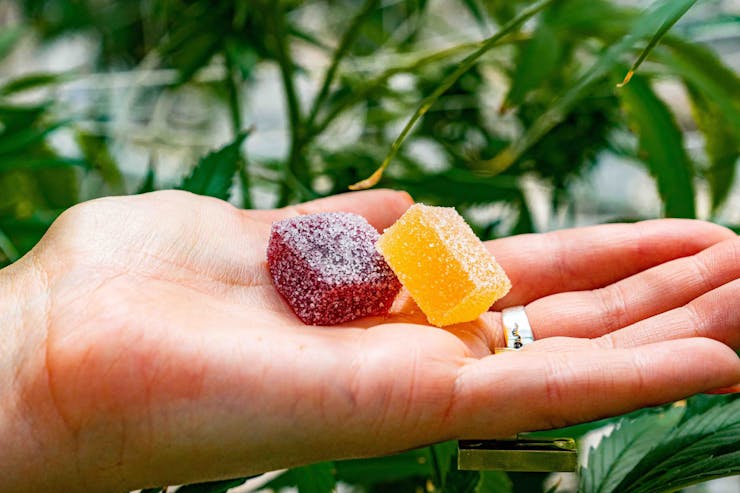For many people, one of the most intimidating aspects of getting high on edibles is the unknown that comes along with it. After popping a gummy, what happens next? How will I feel? What if it’s too much?
The answer may depend on the extraction method.
A number of edibles manufacturers are now addressing this anxiety by advertising strain-specific products. This is also known as effects-based marketing.
In the new effects-based edibles market, manufacturers are increasingly claiming indica/strains/hybrid designations, and, in some cases, tying a product line to a specific cultivar (strain) used to make them. The idea is that the consumer will be able to predict how the edible will make them feel, based on the specific classification or strain.
Questioning the promise on the package
A number of experts who work with cannabis, and researchers familiar with the properties of extracts, however, question whether edibles manufactured using common industry practices can truly be strain-specific.
In other words: When it comes to effects-based marketing, the hype might be hollow.
‘It’s extremely frustrating to see brands use distillate’ and then claim strain-specific effects.
– Rachel King, Kaneh Edibles Company
“Marketing edibles as indica or sativa, is, in my opinion, just marketing, and misguided at that,” said Rachel King, chief development officer at the California edibles manufacturer Kaneh Co.
The trend has proved cumbersome to some manufacturers, who feel their peers are being dishonest and that they are being forced to participate in product labeling they don’t believe is truthful.
“I get told non-stop from people in the industry that I need to do effects based-marketing,” Adam Terry, CEO of Cantrip Seltzer said. “Because I have an incentive to make what sells, it’s really hard for me to avoid that. In some senses, I’ve been adamant about Cantrip not doing that.”
“It is extremely frustrating to me when I see brands that infuse with distillate market their products this way,” King of Kaneh Co. said. “It is hurtful to the industry and our consumers.”

What’s the deal with distillate?
Distillate oil isolates a specific compound, like THC, from the cannabis plant.
King explained that, in the case of THC distillate oil, the “majority of the qualities that make a strain are stripped down during the extraction process,” which negates any claim that something is either indica or sativa, let alone an individual strain.
The whole point of using distillate is that the active molecules in the oil are whittled down to a single cannabinoid. This results in a flavorless product rich in THC and only THC. Distillate oil is also devoid of any flavonoids or terpenes that originally appeared in the plant from which it was originally harvested, rendering one sample of distillate virtually indistinguishable from the next, even if it came from the same plant.
Cooking methods further break down distinctions
King also explained that cooking methods, along with our bodies’ digestive processes, are also doing to further degrade cultivar-specific aspects even further, “even if brands are using live resin or cannabutter.”
So scientifically speaking, edibles made with distillate really can’t claim strain-specific effects. They will get the consumer high. But that high won’t really feel any different, even if one gummy is labeled Sour Diesel and another says OG Kush.
One person may feel more stoned or energized than another person who ingested the same dose. But that’s due to the disparity in how cannabis affects each individual person, not because they ate something infused with distillate oil made from one strain or another.
What about non-distillate methods?
The science gets trickier when considering other methods apart from using distillate.
“It all depends on how it’s prepared,” said Dr. Ethan Russo, a neurologist, psychopharmacology researcher, author, and founder and CEO of Credo Science.
“There’s a difference of one chemovar to another, but, in the process of heating, decarboxylating, a lot may be lost,” Russo said, echoing King’s comments.
“Edibles sure can be effective, but to say that this one put together with this specific chemovar and there’s going to be consistency over time is a bit of a fantasy,” Russo said.
Russo prefers to use the term “chemovar,” which refers to chemical varieties of cannabis. It’s a more scientifically accurate way of describing what most cannabis makers and consumers know as “strains.”

Live resin and cannabutter may deliver specific effects
Russo dismissed the idea that distillate pulled from a specific cultivar could produce effects specifically similar to what could be experienced via inhalation.
But he did allow that live resin or cannabutter “sure could” produce cultivar-specific effects “depending on how much of the terpenoid content is left, for example.”
“An edible made from cannabis is going to have a different effect than the [same] amount of synthetic THC would,” Russo said, delineating between live resin or cannabutter, and distillate.
Pete Feurtado, CEO of Big Pete’s Treats, which is one of the few commercial edibles manufacturers still using cannabutter, explained why the company uses the indica/strains/hybrid distinction. “We use cannabutter for all of our cookies and canna-coconut oil for our vegan line,” he said. “We believe cannabutter is better because it results in a full spectrum experience.”
“We don’t make any claims about effects like sleep, energy, et cetera,” Feurtado added. “The indica/sativa designation is a way for us to be transparent about the flowers we use to make our cannabutter.”
Many factors make a high
Russo cautioned that there are many other factors involved, however. When a person last ate, how much THC their body actually absorbed, whether or not they have a pre-existing tolerance, and other factors could skew their own personal experience. So it’s a hard thing to gauge.
The intoxication experienced by consuming an edible “is still going to be different than what would happen if the same base material were vaporized,” he said, even if live resin were used in the edible.
Dr. Amanda Reiman, ethnobotanist and founder of the multimedia plant medicine advisory service Personal Plants, also agreed with these distinctions but expressed skepticism about the idea of live resin used in an edible.
“With live resin,” she said, “if you’re dabbing it, you’re getting those flavonoids and terpenes. If they are baked into an edible, they’re gone.” Reiman added that when it comes to edibles, available cannabinoids and their ratio to one another are what will determine intoxicating or physiological effects.
Separate, then re-assemble?
Several experts suggested that some edibles manufacturers may be trying to re-create the whole plant effect by using THC distillate, and then infusing terpenes into the product to mimic the profile of the intended strain.
“Just like everything in the cannabis industry, the devil is in the details,” said Colin Nuckolls, Ph.D., who a professor of chemistry and a cannabis researcher at Columbia University. “If you’re just adding THC and what you think is some terpene profile that you read on the internet for Wedding Cake, yes, that’s a gimmick.”
“If you’re using the actual plant,” Nuckolls added, “and you’re relying on the combination of things in the plant we don’t really know fully how it all works, then yes, that could be legit.”
The preparation of plant material, and the extraction process used, are both critically important to whether or not this bears out,” Nuckolls said. Live resin, for example, is a strong contender as an infusion base that could actually carry specific results. But some manufacturers may cut corners and slap a “live resin” label on a product that’s really made with distillate.

Who’s using live resin, and how?
Josh Kirby is the chief product officer at Kin Slips, one of the leading brands in the sublingual strip edible category. Kin Slips manufactures a number of strain-specific products using live resin.
“The difference between a live resin and other more popular kinds of fusion products—like distillates and isolates—is that live resin is specifically a full extraction of what was in that plant,” said Kirby.
“Live resin, by definition, has to be a plant that is still alive,” he added. “So in order for it to really be live resin, you either have to chop it down and throw it right in the tractor as as the library producing machine, or you have to chop it down and immediately turn it into a flash freezer, so that you can store it before it gets to the extraction facility. If somebody is producing a product with live resin, but what they’re really doing is taking a bunch of terpenes and putting those into, another form of cannabis extracts that’s not live resin, that’s just opportunistic marketing.”
It’s complicated, but something’s there
We know from years of personal experience, Kirby said, and a burgeoning body of scientific experiments, that there are differences in the way individual cultivars are expressed. Different strains have different cannabinoid profiles, terpene profiles, flammability profiles, and physical effects.
The sativa and indica dichotomy, Kirby added, can be a helpful loose guide. It’s not entirely false, but the simplistic two-category framework has significant limitations. An indica or sativa designation, and even a specific strain name, should never be taken as a hard and fast rule when evaluating how something might cause a specific effect in the body. Echoing what Russo said, that needs to be done by analyzing all the components in a lab, not just by slapping a strain on a specific plant.
It’s clear that distillate edibles marketed as anything strain-specific are a false promise, while the jury is still out on edibles using fuller plant extractions like live resins or cannabutters.
Like with anything in the nascent legal cannabis industry, consumer education is a buyer’s best friend. Consumers should always ask for a Certificate of Analysis and ask questions about extraction methods and which is used by what company. If there’s one thing everyone interviewed could agree on, it’s that we still have a lot to learn about the science of cannabis and how the plant’s various components affect the body.





